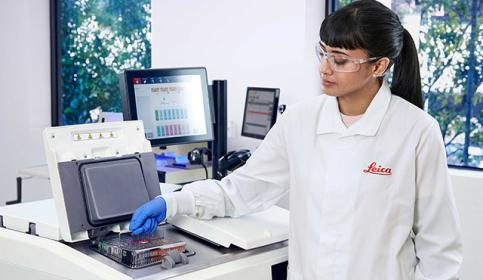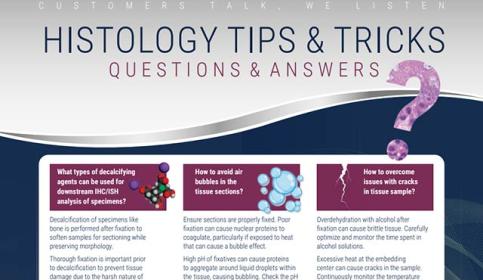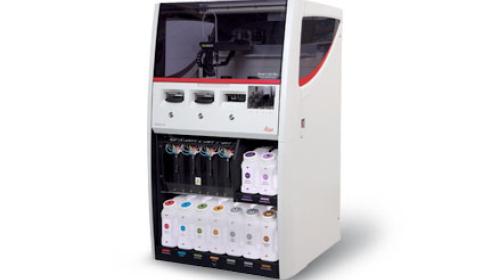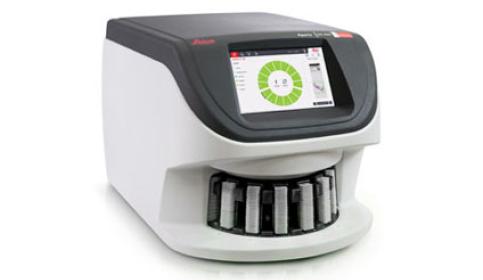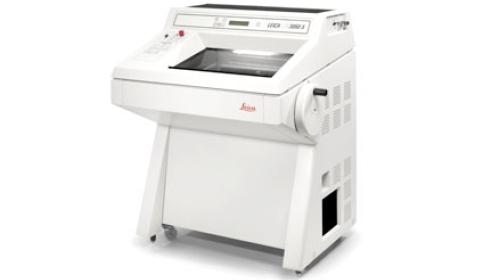Histology & Pre-Analytics
Ensuring pre-analytic quality in histology drives high-caliber data in downstream applications. Explore our webinars, articles, and resources for improving your processes.
4 Tips for Buying a Microtome
What should you look for when purchasing a microtome? Here, we offer 4 tips that will help you through the process.
Pre-Analytics and Histology Research Solutions
Tissue-Based Research Workflows: Why Quality Matters
Quality, once lost, cannot be regained. Upstream pre-analytic quality is imperative to generating high-caliber data for exploring spatial biology, from IHC to multiplexing to plotting the tumor microenvironment.
Buying a Research Microtome: Why Quality Matters in Research Microtomy
Reliable and precise microtomes are designed to provide high-quality sections and enhanced efficiency while maintaining a safe and healthy workplace. Read more in this research microtome buying guide.
H&E Image Quality & Tissue-Based Research
Rhian Evans, Ph.D., Scientist
H&E is an important tool for disease research and drug development and is being increasingly combined with digital pathology technology. Image quality is important for slide digitization to ensure that interpretation is accurate. Take a look at some images here, produced by our digital pathology scanners.
How to Create a High-Quality H&E Staining Protocol
Andrew Lisowski M.S., HTL (ASCP)
(H&E) Routine Staining quality depends on all preceding steps: fixation, processing and microtomy. Protocols chosen, as well as consumables used, might and will affect coloration and intensity of the stained specimens.
Tissue Processing Artifacts: Checklist for Success
Robin Fitzl, Sr. Field Applications Specialist - Leica Biosystems
Learn more about tissue processing artifacts, what is "optimal" and what is "not," and how to optimize tissue processing techniques with a downloadable checklist for success.
Histology Tips & Tricks: Questions and Answers, Part 1
Rhian Evans, Ph.D., Scientist
Following our two-part webinar series of Tips & Tricks to Better Histology, further questions were raised by customers referring to specific issues encountered during histology/staining practice. Some of these questions are answered here to help combat issues experienced in the laboratory.
How to Write a Grant Proposal
Grant writing is a critical part of an investigator’s portfolio. It is a process by which a grant writer requests funding to test/study a novel idea to advance human health. Read this helpful resource for tips and tricks on how to write a grant proposal.
Histology Tips & Tricks: Questions And Answers, Part 2
Rhian Evans, Ph.D., Scientist
Following our two-part webinar series of Tips & Tricks to Better Histology, questions about histology-related issues were received from customers and answered by Leica Biosystems. In part 2, more questions are answered, specifically regarding decalcifying agents, and tissue section bubbling/cracking.
FOR RESEARCH USE ONLY. Not For Use In Diagnostic Procedures.
Featured Life Sciences Products
BOND RX
The BOND RX high-throughput research stainer delivers speed and flexibility for IHC, ISH, and multiplexing staining with either chromogenic or fluorescence markers.
Aperio GT 450
Scale up Digital Pathology operations by increasing throughput in high volume research pathology laboratories, with 450 slide capacity and rapid scanning.
Learn More

